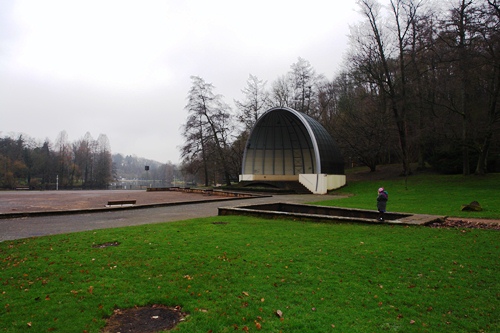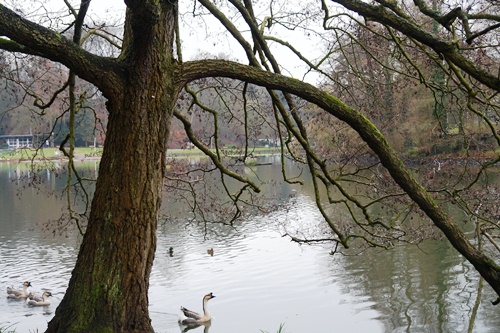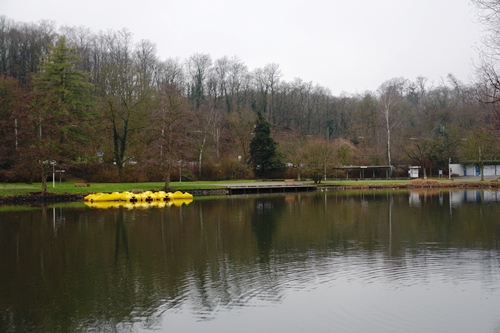Saarbrücken straddles the river Saar up against the German-French border, and this part of the world has been much disputed by those two great European powers as the Saarland passed back and forth depending on the movements of history. After the Second World War there was much discussion about what to do with this little wedge of territory, and it was only at the end of the 1950s that a decision was finally made and Saarland became the 10th state of the Federal Republic of Germany.
To mark the occasion, and in the spirit of friendship between the two nations, the Franco-German garden was built, a stone’s throw from the border. The park occupies two valleys; one named in memory of the victims of the infamous Battle of the Spichern Heights in Franco-Prussian war of 1870, and the other for the mill built by Teutonic knights in the Middle Ages.
Entering the park, we dropped down from the heights of Bellevue at its southern end, where roses will bloom later in the year and where, under the cypress trees and ivy, the graves of the victims of the Battle of Spichern still stand. The names on the gravestones give a hint to the nationalities of the fallen in the war of 1870, and both French and Prussian soldiers were buried here, as well as civilian victims from both sides.
We followed the narrow railway tracks along the valley towards the large pond, alone in the park save for a handful of dog walkers. In the summertime this is a popular spot, with its open air stage, wide green meadows, a cable car and train to entertain the kids, and a boules court for the neighbours to cross over the border and show the locals how it’s done. Looking down onto the pond is a large hotel and casino, but on a grey Friday in January, the lowest of the low season, there was not much sign of life.
At the north end we paused by the Nordbahnhof, one of the stations of the miniature train. No-one was waiting, because the next scheduled departure is not for months. A group of joggers passed through the gate and onto the footpath, doubling the number of visitors in the park. On the pond the paddleboats were huddled together, leaving the expanse of water to the ducks and geese. A sign told us that this has long been a popular spot for birdlife, since before the park was imagined.
These hills, waterways and forest were long disputed and fought over, the final resting place of soldiers sent to fight out those disputes to their violent, final conclusions. That it is now a place of recreation, of fun and games – named in honour of both sides of a border that one no longer needs even a passport to cross – is somehow a fitting tribute to those buried in its soil, and a reminder of how far, as a continent, we have come.
Words: Paul Scraton
Pictures: Katrin Schönig








